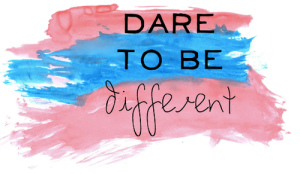We are so busy with work these days. We get used to having a certain routine everyday, and after time, we are afraid to stray off that path. But to maximize your happiness and your overall success at work and in life, you must get out of your comfort zone, work on time management skills, and stay healthy while doing it. Read below to learn more:
1. Get out of your comfort zone: Try something new everyday!
Human beings are afraid of change (this has been scientifically proven). Getting out of your comfort zone by trying something new may seem scary, but this is only at the beginning. Change and lack of familiarity cause these fears to arise in us, however, by practicing something new as often as you can, you will make it a habit and lose that fear. You will start to see the benefits of getting out of your comfort zone as that fear turns into fulfillment and adventure!
Nothing contributes to our happiness more than shattering the delusions to which we cling.
An example of getting out of your comfort zone to try something new could be coming up to someone you’ve never spoken to, and starting a conversation with them. Most people want to meet other people, but are afraid of feeling rejection. If you come up to them and initiate the conversation, they will probably be excited and have a lot to offer to the discussion. People love talking about themselves — so make sure you ask questions about them! You never know who you can meet and who they may know, how they can help you, etc. By getting out of your comfort zone, you have just expanded your network with one conversation!
2. Don’t waste valuable time in meetings
If you work in corporate America, you know how much time can be wasted because of unproductive meetings.
To combat this, prepare ahead of time. If you’re leading the meeting, make sure that all of the meeting participants are on time and are ready to focus in the meeting. It helps when people don’t bring in their electronic devices and when they close their laptops — this ensures that everybody will be engaged and not distracted. Let them know that they can take notes on notebooks, as this is proven to increase retention, memory, and learning.
Another way to combat wasting valuable time in meetings is by keeping them organized and on a time-sensitive schedule. You can do so by making sure to send out an agenda with action items before the meeting, setting specific topics and goals of the meeting in mind before the meeting begins.
Lastly, if you are presenting or in charge of bringing any material to the meeting, make sure that it is open on your computer or email beforehand (such as presentations, emails, or other documents or files) in order to help make easy and fast transitions between presentations and save valuable time!
3. Stay active and healthy
What do most successful people have in common? They are fit and stay in shape. Many studies have discovered the direct correlation that exists between staying in shape and having a successful career. Working out, as well as nutritious eating habits, improve time management, boost mental performance and mental clarity, and improve employee morale, energy, and stress levels.
To stay active, make sure you can fit working out into your schedule. For instance, you can schedule your workouts in the morning by waking up earlier (if you’re a morning person) and going for a walk or jog in the park or around your neighborhood. Working out in the morning will surely give you a huge energy boost that will make you feel rejuvenated throughout the day. If you’re more of a night owl, you can do your exercise in the evening. The key is to find what works for you and do it consistently.
Hope these tips help you feel happier at work, and bring you great success in all of your endeavors!
e










